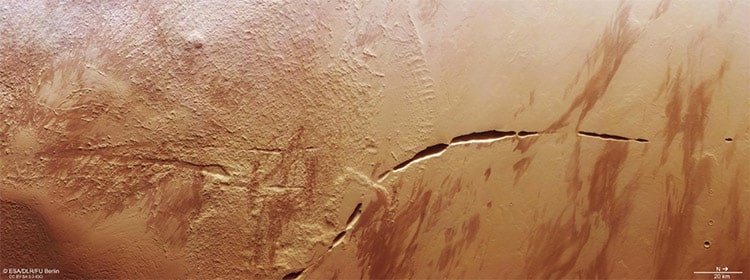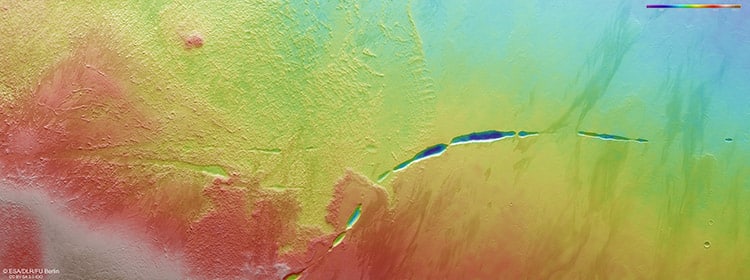Aganippe Fossa, the steep-walled canyon on Mars.
One such satellite is the Mars Express orbiter operated by the European Space Agency (ESA).
It stretches for an impressive 373 miles, longer than the 277-mile length of theUnited States' Grand Canyon.

Aganippe Fossa, the steep-walled canyon on Mars. (Photo:ESA/DLR/FU Berlin,CC BY-SA 3.0 IGO)
It is one of several volcanoes in this region of Mars, known as Tharsis.
Aganippe Fossa likely formed due to the region’s volcanic activity.
As if the planet has a stretchmark, the Aganippe Fossa holds a story of change.

Aganippe Fossa’s region shown in different colors to indicate altitude. “Lower altitude parts of the surface are shown in blues and purples, while higher altitude regions show up in whites and reds, as indicated on the scale to the top right,” according to the ESA. (Photo:ESA/DLR/FU Berlin,CC BY-SA 3.0 IGO)
It also traverses two wildly different lanscapes as shown in the images.
The rough leftmost half is called hummocky terrain, rocky hills and valleys.
This transitions into lobate terrain which features more gentle slopes and rocky features.
To the far right are zebra stripes created by winds whipping sand into patterns.
Aganippe Fossa’s region shown in different colors to indicate altitude.